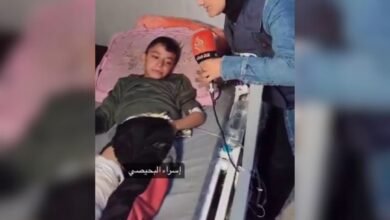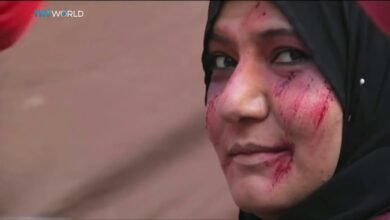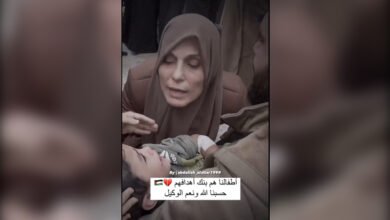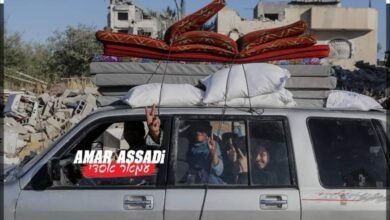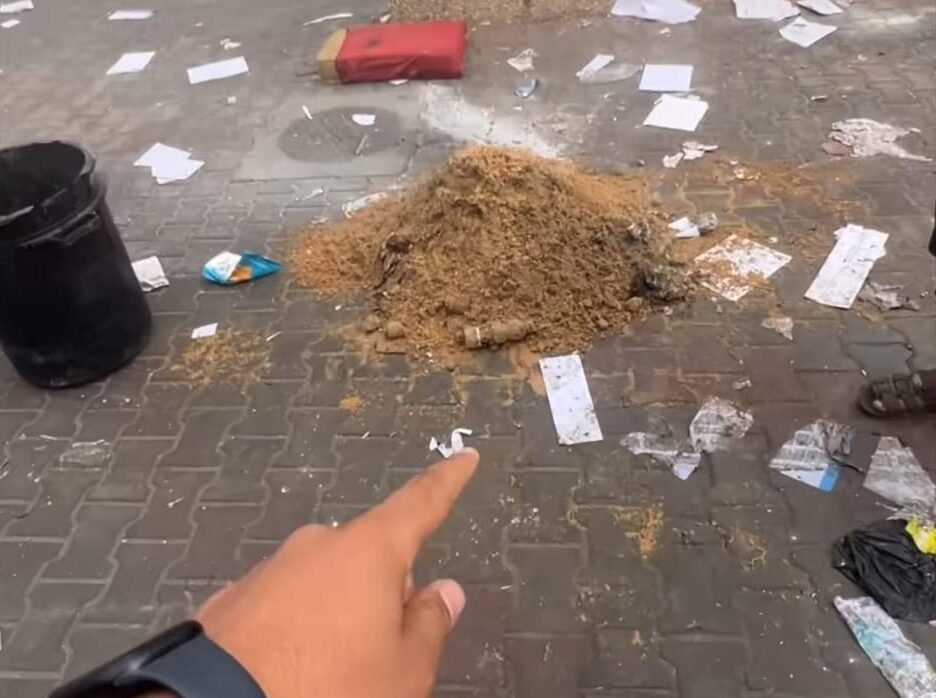
| The claim |
| Eddie Cohen: “Dear Gazan, this is a smoke bomb, not white phosphorus. If it were phosphorus, you wouldn’t be speaking now.” |
Israeli journalist Eddy Cohen cast doubt on the bombing of a school belonging to UNRWA through his official account on X. Cohen commented on a video that documented the first moments of the school’s bombing, where the cameraman said that the Israeli occupation bombed the school with phosphorus bombs. The video shows footage of shells falling in the schoolyard, emitting thick smoke. Displaced people inside the school hurriedly try to extinguish the fire. Cohen commented skeptically on the video, saying, “Dear Gazan, this is a smoke bomb. If it were phosphorus, you wouldn’t be speaking now”.
The video is documented by the content creator Ahmed Hajazi from Gaza Strip, and it captures the moment when the Israeli occupation army targeted the “Abu Assi” School with internationally banned white phosphorus bombs, yesterday. The school is affiliated with the United Nations Relief and Works Agency for Palestinian Refugees (UNRWA) and hosts thousands of displaced Palestinians from the Beach refugee Camp.
The Palestinian Observatory “Tahaqaq” has examined the narrative of Israeli journalist Eddie Cohen that casts doubt on the Israeli occupation’s targeting of the school with internationally banned white phosphorus by referring back to the original video posted by activist Hajazi on his official Instagram account. It was found that the original video is 1 minute and 28 seconds long. However, Cohen selectively omitted the initial moments of the video and intentionally didn’t publish other clips that clearly show the white phosphorus
Our team relied on the following evidence to refute Cohen’s claims:
Firstly, by referring to previous documentation of Israeli airstrikes using white phosphorus bombs on various areas in the Gaza Strip, and comparing them to the visible effects of the bombing in the video, it is evident that they match completely. White phosphorus bombs leave white smoke trails in the moments immediately after being launched into the sky of the targeted area. This is exactly what is shown in images (1,2) with the presence of smoke trails in the sky of the targeted school, similar to the trails seen in images (3,4) of previous airstrikes in the region.


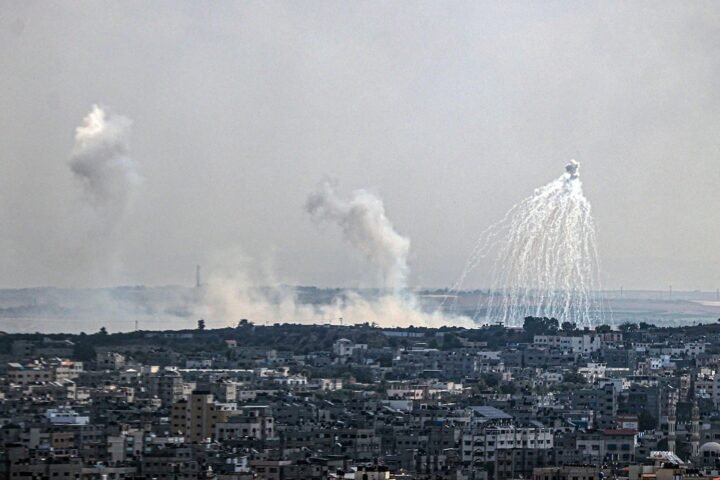
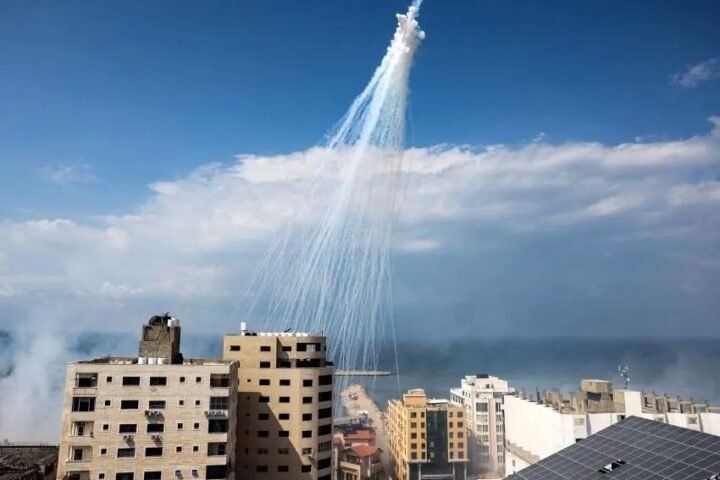
In conclusion, by comparing the photos documented by content creator Ahmed Hijazi targeting the school with previous images and footage that documented the targeting of different areas in Gaza with white phosphorus bombs, it becomes evident that the projectiles used to target the “UNRWA” Beach School are white phosphorus bombs. This contradicts the claim made by the Israeli journalist Eddie Cohen.
Secondly: Our team communicated with the retired Major General and military expert Wasef Areqat, the writer and military researcher Saad Al-Wahidi, and the video documenter Ahmed Hijazi, all of whom confirmed that the visible bombs in the video are white phosphorus bombs.
Areqat stated that from the video, it’s clear that the bomb was dropped from the air, confirming that the source of the launch was an Israeli aircraft. When the bomb or projectile fell, its smoke color was white, and after interacting with oxygen, it turned black. Additionally, injuries including burns on the face, eyes, and lips are further evidence that these are white phosphorus bombs.
This was also confirmed by Al-Wahidi, who said, “Phosphorus material falls as white flaming lines with white smoke, not as a single piece, and this is clearly evident in the last frame of the video. So, these are white phosphorus bombs.” He pointed out that the bomb shown at the beginning of the video is a smoke bomb, but the other bombs are unequivocally white phosphorus, emphasizing that the nature of the reported injuries confirms that they are white phosphorus bombs.
As for the video documenter, Ahmed Hijazi, he confirmed that he was present at the moment the school was targeted. He pointed out that the school was subjected to three types of attacks simultaneously, which are “phosphorus bombs, artillery shells, and smoke bombs.”
Hijazi added that he couldn’t document the injuries due to the intense suffocating smell resulting from the white phosphorus bombs. He mentioned that extinguishing white phosphorus involved covering it with a large amount of wet sand because it cannot be extinguished with water, which is what happened at the Abu Assi School in the Beach refugee camp.
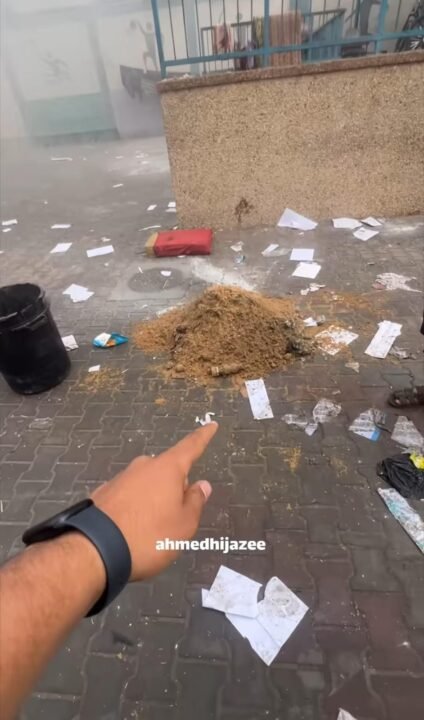
| The result |
| The segment is taken from a video recorded by Ahmed Hijazi, and it was intended to cast doubt and employ it in a misleading context. |
| Prosecution sources | Verification sources |
|
The original footage on Ahmed Hijazi’s account. Retired Major General and military expert Wasef Areqat. Military researcher and writer Saad Al-Wahidi. |


